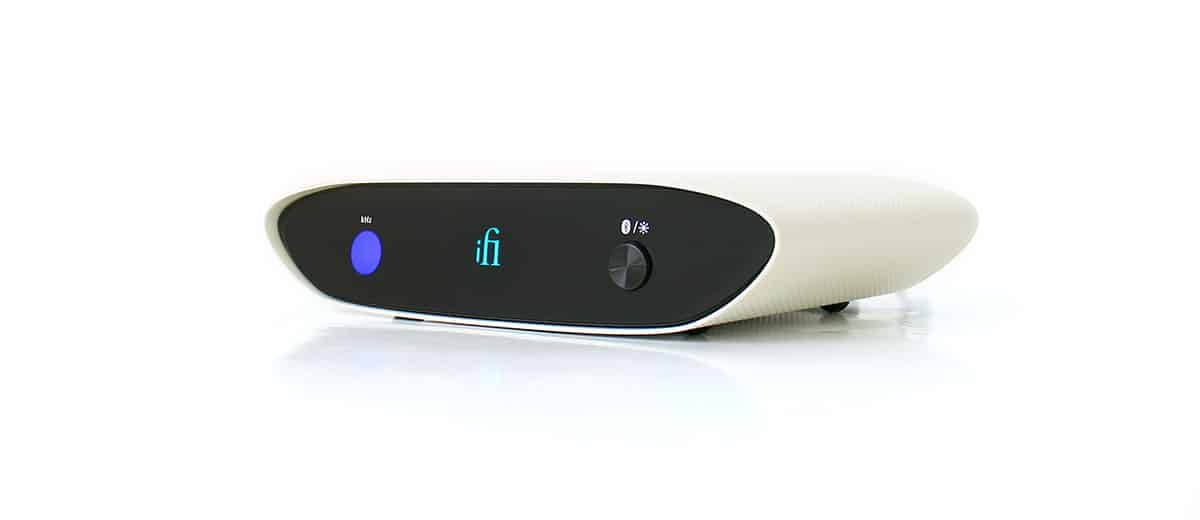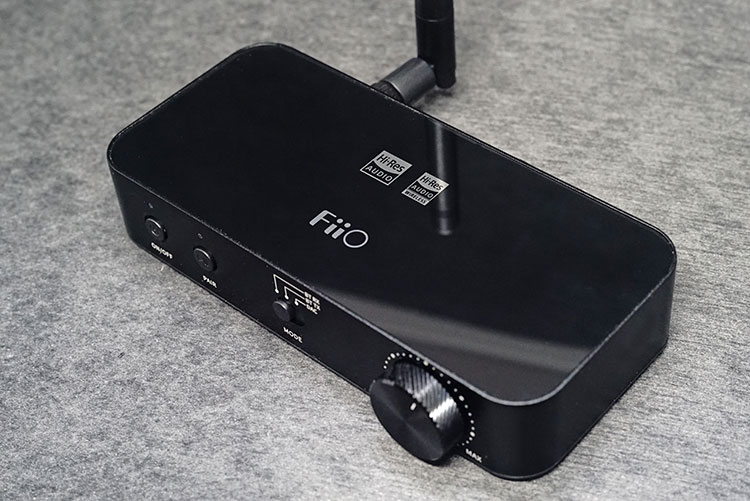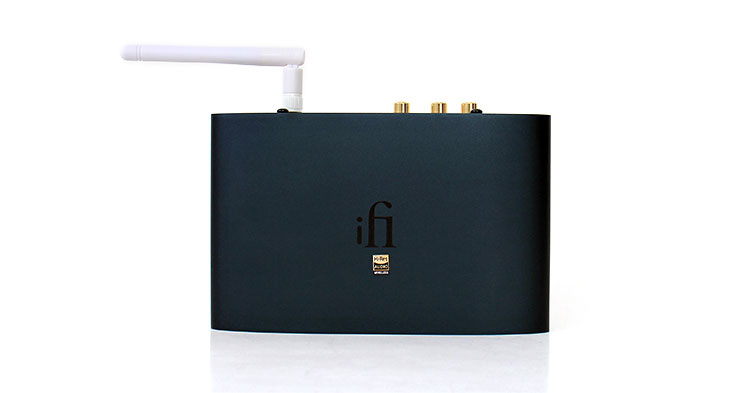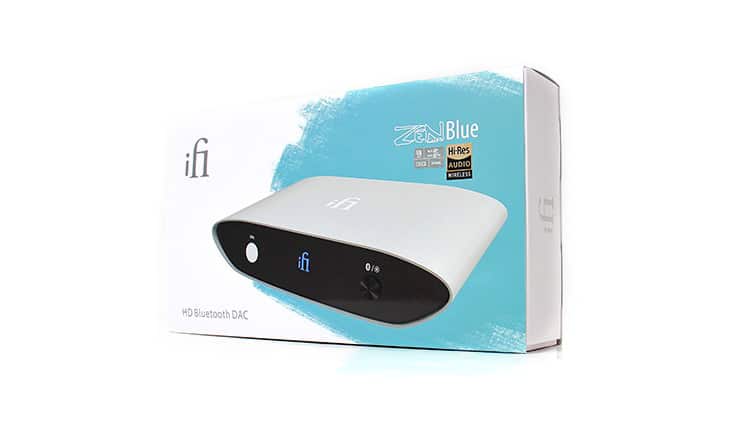Integration
I would rather talk about pairing versatility over what particular gear the ZEN Air Blue works best with. We already established that any device would do in this case. Most devices will play back indistinguishably from each other long as you use a quality source and LDAC.
The ZEN Air Blue will make an excellent streaming device from a PC to a home theatre for example. You could sit at a PC and send any PC source you have to any RCA-equipped gear. Or you could simply play the DJ role and entertain guests from a mobile device.
The bottom line is that the ZEN Air Blue can be used with any device capable of Bluetooth transmission, do its job, and feed the end result to any RCA input-equipped device.
It can sound optimal regardless and the quality will be much more dependent on the connected amplifier and speakers especially if the BT playback source is a clean one.
Select Comparisons
FiiO BTA30
$89.00
Technical
The FiiO BTA30 is a more complex device and it certainly does more chores than the comparison unit which is the ZEN Air Blue. It can send or receive a Bluetooth transmission. These functions are selectable by the position of the front panel BT RX mode or the TX mode switch. The switch also includes a DAC mode.
The DAC mode is possible since FiiO made good use of the internal AKM AK4490 which is a chip that has been used in a plethora of components, some budget, and some high-end models as well. So, the BTA30 can act as a USB, SPDIF, or optical input DAC.
My Asgard uses an AK4490EQ DAC which was a $100 option and I remember playing around with a $2400 Focal Arche that uses the same AK4490EQ chipsets. So, to find this chip on such a budget and versatile piece of gear I found it quite interesting.
On the Bluetooth end, the BTA30 uses a CSR8675 by CRS which was acquired by Qualcomm. This chip uses a dedicated DSP engine and runs a long list of codecs over a Bluetooth 5.0 radio. It’s similarly a 24BIT and 96k capable chip and similar to the 5125 in that respect.
Design
The FiiO BTA30 is smaller than the ZEN Air Blue but packs in lots of features. The back of the unit has a USB-C power and combo input connection along with separate optical input and output connectors, a combo in and out Coax plus a set of L/R RCA analog outputs.
The front panel is also crammed but not as much compared to the rear panel. There’s a power button, a pairing button, the mentioned 3-position mode switch plus a volume knob.
There are many features of the BTA30 that are hidden away within the downloadable app which gives the user a selectable upsampling filter, selectable low pass filters, adjustable max volume levels plus a few other goodies.
The app is called FiiO control, it’s free to download and it works with lots of other FiiO components.
Performance
To be fair, let’s just compare the receiver end of the FiiO BTA30 against the ZEN Air Blue. If we start off with range, the FiiO has an external antenna and the type usually outperforms units with built-in antennas in this respect. In this case, you do get an extra three or four feet of long-range transmission capability.
However, the more neutral and best in sound quality is the ZEN Air Blue and the DAC is most likely the source since the BTA30 uses a CSR chip that again was acquired by Qualcomm and is in fact inferior to the QC line for example, and most other Qualcomm offerings.
In this case, the hyper stream DAC simply has better specifications and higher levels of sonic performance. The CSR DAC has some graininess and is not as smooth sounding as the ES9023 DAC.
In a twist of fate, however, the new BTA30 pro has an ESS ES9038Q2M which is a more updated chip that will probably be more on par with the ES9023 or at least comes closer to in performance give or take but of course the Pro version has a higher price tag.
However, it might be worth a look at rather than the first iteration if performance is of paramount importance.
iFi Audio ZEN One Signature DAC
Technical
Okay, let’s get the obvious out of the way first. Comparing the ZEN Air Blue to the ZEN Blue is practically unnecessary because they both use the same Bluetooth receiver and the same DAC chip so the only changes are the inclusion of a balanced output and a sturdier outer skin.
So, you just choose the one with the features you want. You get a few digital output ports besides the balanced out also but the sound quality is practically identical.
When it comes to the ZEN One Signature, are we being fair to compare such an elaborate unit? The ZEN One Signature is a higher-cost unit and a standalone DAC. It is a higher tier level of machine because it has some higher-end components like a 16-core XMOS, a beefier dual Burr Brown DAC chipset, balanced connectivity, and of course a Bluetooth receiver section.
Both these units however seem to run the same 5100 series Bluetooth 5.1 chip and they even locate it on the same spot of the circuit board. The main difference here lies with the DAC chip which in the case of the ZEN One Signature is a dual Burr Brown setup that can reach higher bit rates on digital formats.
Design
The same shape remains but the ZEN One Signature DAC has an all-metal outer skin with metal front and back panels so it is the sturdier model compared to the ZEN Air Blue.
The ZEN One Signature DAC has an external and removable antenna type and claims high gain and better long-range reach. You do get about four to five feet of added distance but 25 feet should be sufficient unless your living room or listening area is extremely large.
The ZEN One Signature DAC is a good-looking device to look at especially when it sits in a dark corner displaying all the LEDs and that gorgeous backlit iFi Audio logo.
Performance
So, does the more expensive unit produce better sound than the ZEN Air Blue through its Bluetooth receiver section? To be honest the differences are practically indistinguishable and there’s an obvious reason for that.
Both models use the same 5100 series chip so if the DAC section is capable of 24bit 96k audio or above then the DAC section will not be the limiting factor. Hence they should sound similar with the exception of the warmer presentation overall of the ZEN One Signature DAC.
But if you compare both units running Bluetooth off the same source and codec and off the RCA jacks I bet 99 out of 100 will not be able to tell the difference sonically in a blind listening test because they’re that close.
Our Verdict
I would recommend the iFi Audio ZEN Air Blue to anyone who wants a simple way of injecting some Bluetooth connectivity to an existing setup that has an RCA analog input but is somewhat worried that the sound quality would be noticeably worse than a wired DAC. The differences are minuscule so you will most likely be pleased with the performance.
You could almost mistake the sound output for a wired DAC section. Consider it a good-sounding component that for everyday listening around the house and basic entertainment scenarios it does a very good job.
This is one of the better sounding Bluetooth devices sonically and if you feed it a good source over LDAC it will surprise you how much good sound can be had for such little cash and over a Bluetooth transmission.
iFi Audio ZEN Air Blue Specifications
- Power supply requirement DC 5V, ≥ 0.5A (center +ve)
- Chipset Qualcomm QCC 5100 Series
- Input Bluetooth 5.0TM with SBC, AAC, aptX, aptX HD, aptX Adaptive, aptX LL, LDAC, LHDC/HWA Codec
- Outputs Audio RCA L/R
- Frequency Response 20Hz – 20kHz +0/-0.5dB (44.1kHz) 1Hz – 44khz +0/-3.0dB (>= 88.2kHz)
- Output Voltage @ 0dBFS 2.05V (+/-0.05V )
- Dynamic Range 109dB (A)
- Signal/Noise ratio 109dB (A) @ 0dBFS
- THD & N <0.0015% 10k Load @ 0dBFS
- Output Impedance <50Ω
- Power Consumption <2.5W
- Dimensions 158 x 100 x 35 mm 6.2″ x 3.9″ x 1.4″
- Net weight 295g 0.65 lbs






